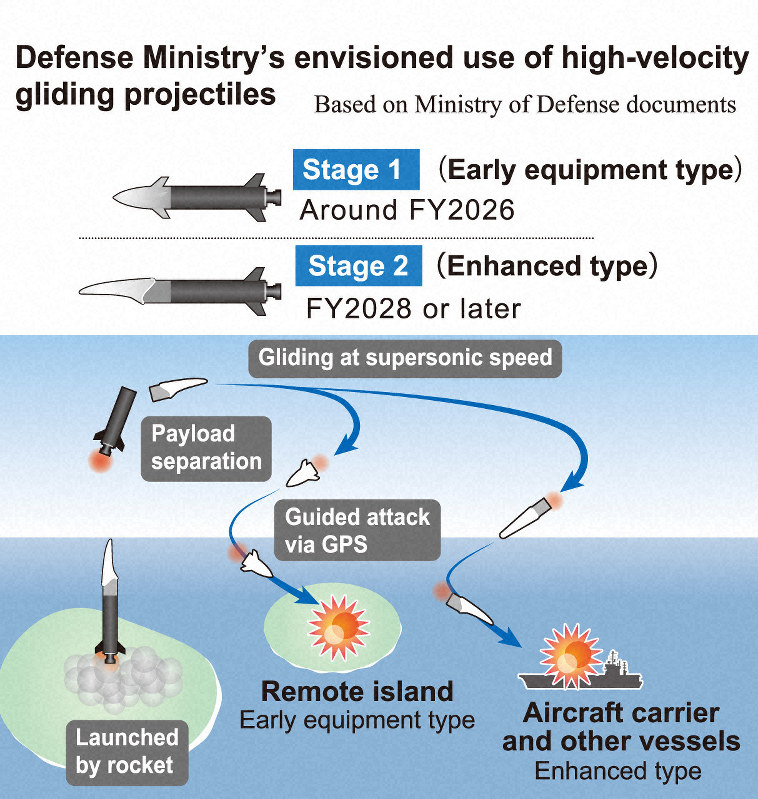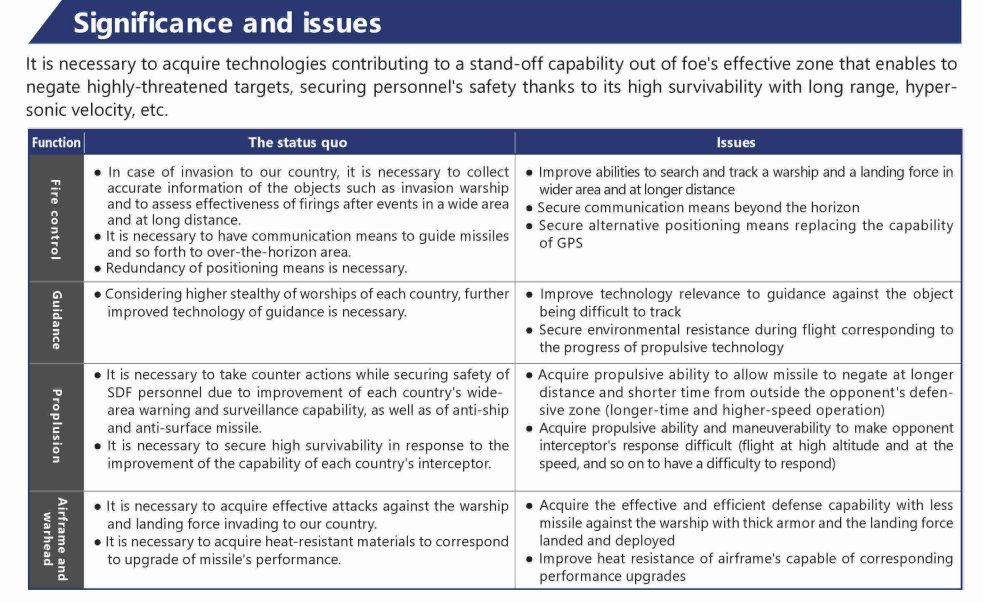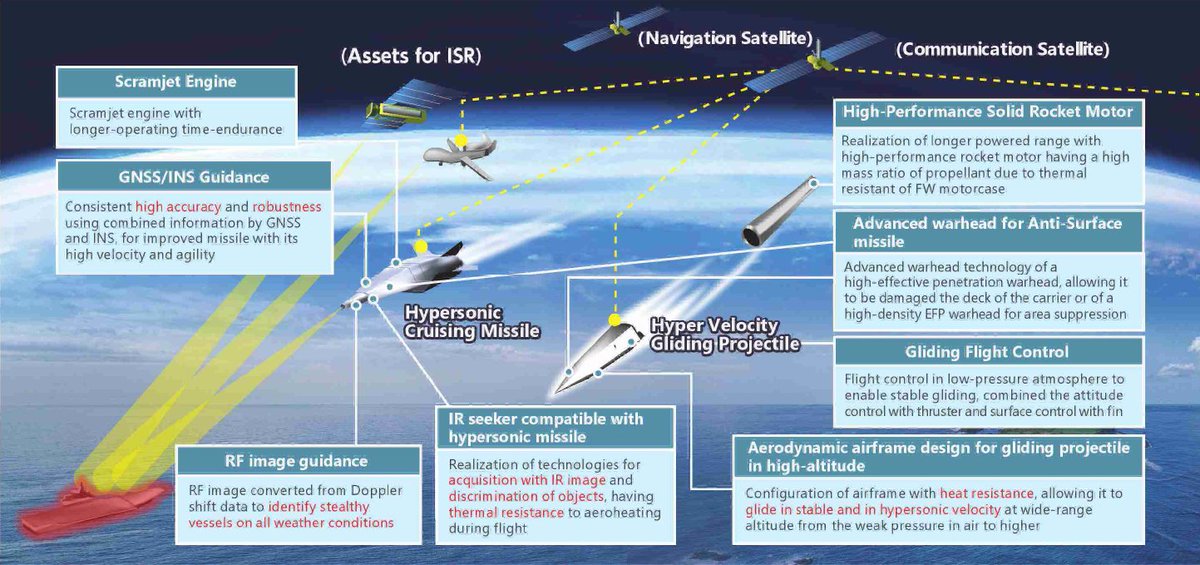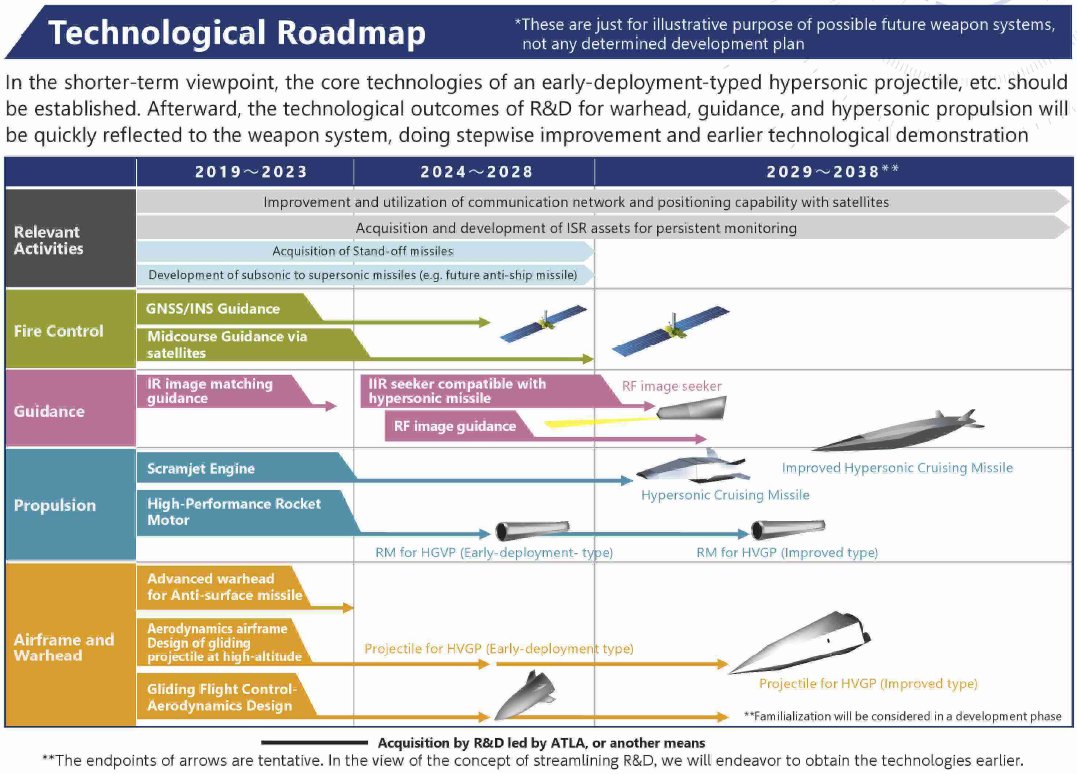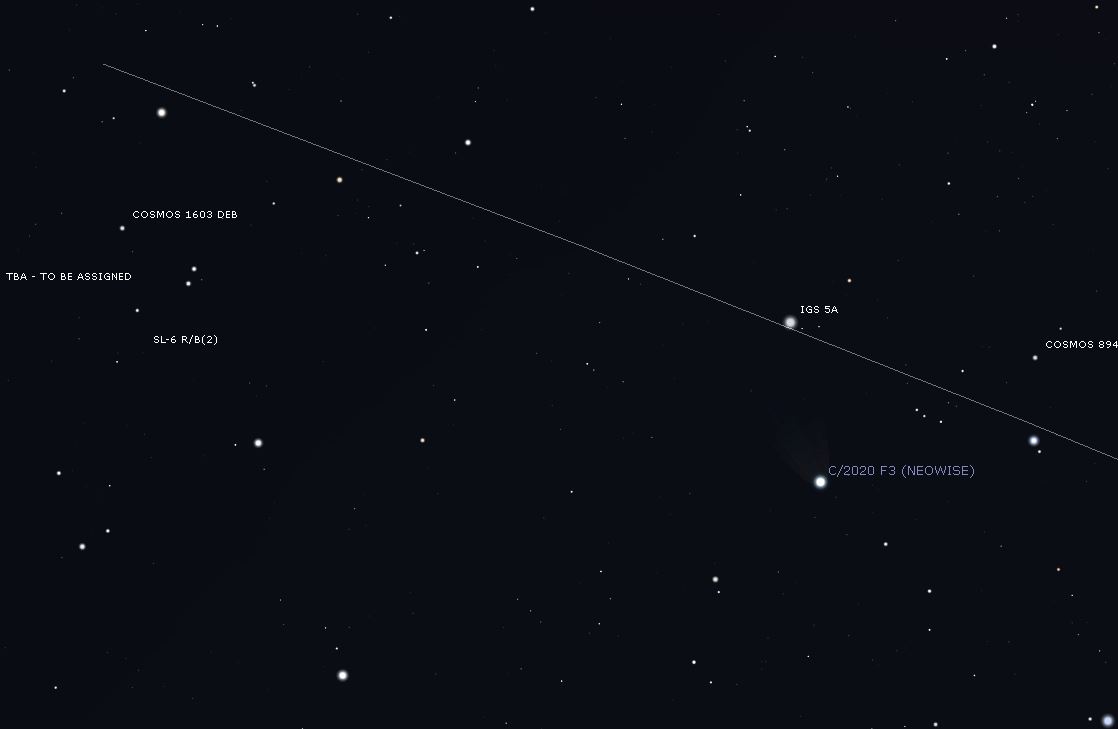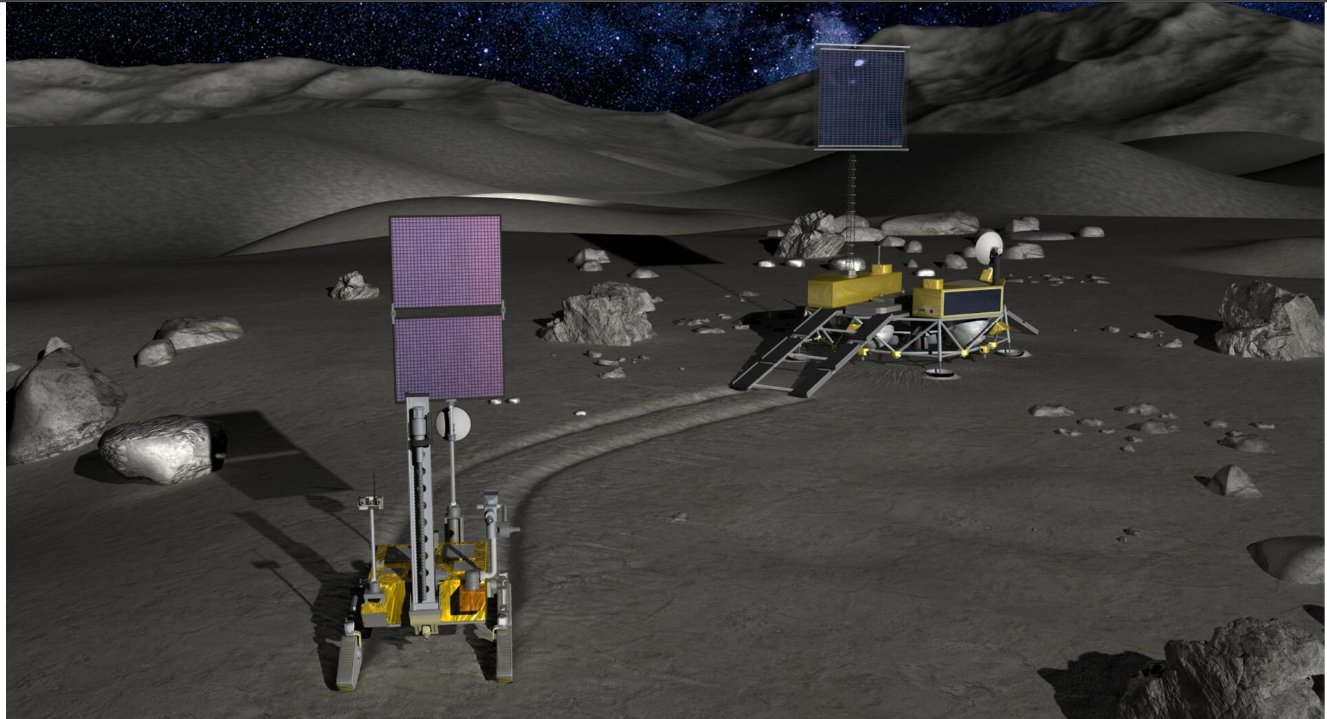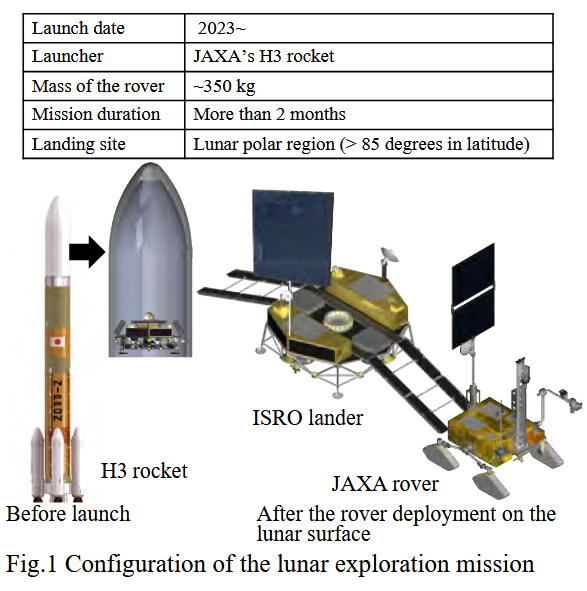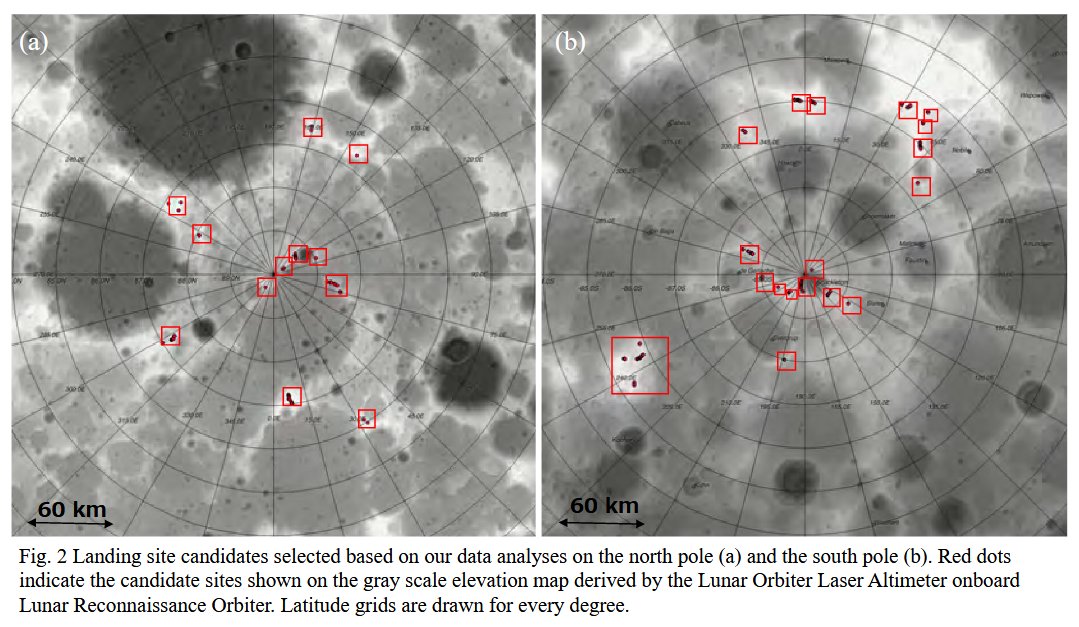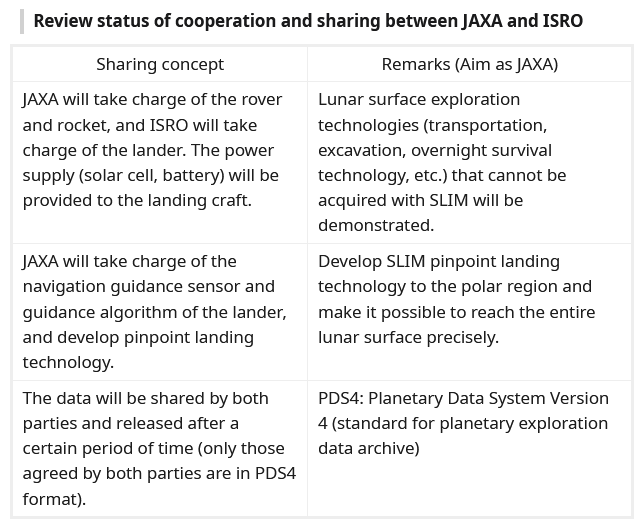Galactic Penguin SST
BANNED

- Joined
- Aug 10, 2017
- Messages
- 1,454
- Reaction score
- 1
- Country
- Location
The latest attempt to catch the most elusive Iranian Noor-1 satellite and its mysterious 3rd stage QASED R/B (Arash 24 solid motor) was unsuccessful due to the proximity of the moon, but the frame has easily captured along the high RCS Indian TES military reconnaissance satellite, the Japanese IGS 8A military synthetic aperture radar (SAR) satellite.
Very high noise level of the camera sensor caused by the current record heatwave (38C degrees in the arctic lately or 17C degrees above the average June level).
__________________________
IGS 8A (IGS-Radar 4)
Information Gathering Satellite (情報収集衛星, Jōhō Shūshū Eisei) are the satellites of the Japanese spy satellite program. It was started under the clumsy excuse as a response to the 1998 North Korean Kwangmyongsong-1 satellite launch. The satellite program's main mission is to provide early warning of impending space launches in the region. This program is under the direct control of the cabinet. All Information Gathering Satellites have been launched by H-IIA rockets from the Tanegashima Space Center.
On 28 March 2003, presumably partly in response to North Korea's launch of a Paektusan-1 space carrier in 1998, and partly to provide a source of satellite images other than through cooperation with the US, where the US charged roughly US$10,000 for each satellite image, Japan launched a radar and an optical spy satellite, officially known as IGS 1A and IGS 1B.These satellites follow one another at 37-minute separation in a 492 km orbit, which passes over Pyongyang at 11:22 each day, according to observations collected on the satellite watching mailing list.
The program suffered a setback when Japan lost the second pair of satellites because of an H-IIA launch failure on 29 November 2003.
Except the satellite which failed in launching, a second optical surveillance satellite IGS 3A was launched on 11 September 2006.
A third optical satellite IGS 4A and a second radar satellite IGS 4B were launched on 24 February 2007. IGS 4A is a more advanced and experimental optical satellite.
A fourth optical satellite IGS 5A was launched on 28 November 2009. This satellite has a higher resolution than the previous generations.
Late March 2007, the first SAR satellite in the series, IGS 1B, suffered a critical power failure. The satellite has since been observed to steadily come down and was clearly no longer under control. An uncontrolled re-entry of this satellite occurred on 26 July 2012. Since summer 2010, another of the SAR satellites, IGS 4B has also been unable to carry out its monitoring functions.
Following several more satellites, the IGS 8A (IGS-Radar 4) launched on 27 January 2013, is a 3rd generation of SAR, with a ground resolution of under 1 meter.
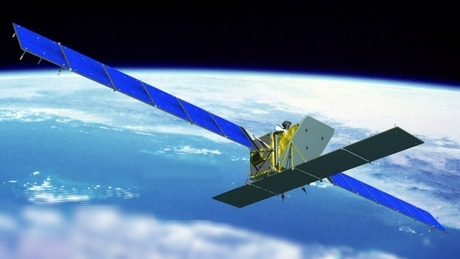
http://archive.vn/Ycc9W/91d2b2bc3c90c59ad557b8187994d2d7319e9c15.jpg ; https://archive.vn/Ycc9W/33007091386372e258b257afbc45ffb55cebe199/scr.png ; http://web.archive.org/web/20200710...apan/22/d8/j/o0460025913193194195.jpg?caw=800 ; http://web.archive.org/web/20200710002425/https://ameblo.jp/skysatjapan/entry-11978451048.html ; http://archive.vn/hXfqV
▲ 1. Launched on 27 January 2013, the IGS 8A (IGS-Radar 4) is a 3rd generation of SAR, with a ground resolution of under 1 meter.
__________________________
The Information Gathering Satellites are built by Mitsubishi Electric (MELCO), operated by the Cabinet Satellite Information Center - that is to say, presenting these as "non-military" satellites to gather "information" rather than military intelligence satellites.
What an utter reckless sophistry from the same that at the same time dared to claim the North Korean civilian Kwanggmyongsong-1 satellite launch was a maskirovka for a ballistic missile!
This program presents a few puzzles. The first launch, which was successful [and presumably the second launch, which was not], orbited a pair of spacecraft, one radar and one electro-optical. By one account, the former had a mass of a bit under 1,000 kg, and the later a bit more.
Many details, including orbital parameters, were classified for the first time in Japan's post-war history. The satellites, called Optical-1 and Radar-1, carried either optical or synthetic aperture radar sensors. NASDA reported that deployment of each satellite's solar panels went as planned and that the spacecraft's' operations were nominal. Full information and transmissions services of the IGS system were expected to begin in March 2004 following the planned launch in August 2003 of Optical-2 and Radar-2. The design life of the satellites was five years.
IGS 8A
NORAD ID: 39061
Int'l Code: 2013-002A
Perigee: 516.9 km
Apogee: 523.3 km
Inclination: 97.4 °
Period: 94.9 minutes
Semi major axis: 6891 km
RCS: Unknown
Launch date: January 27, 2013
Source: Japan (JPN)
Launch site: TANEGASHIMA SPACE CENTER (TNSTA)
IGS 8A is a Japanese spy satellite. The radar-equipped satellite can take pictures of the ground day-and-night and in all weather conditions.
__________________________
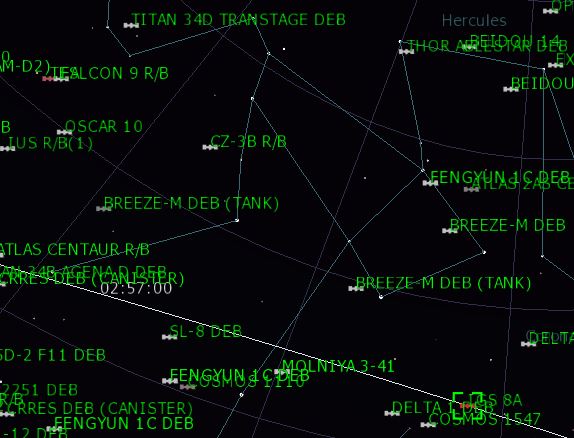
http://archive.vn/2auU2/c6802f14bf8722a3e85a43daebe33f80cba8868f.jpg ; https://archive.vn/2auU2/718250272c5d5c1b8679544ff57247478ccbccea/scr.png ; http://web.archive.org/web/20200710011012/https://i.imgur.com/Ot6JyYC.jpg
▲ 2. IGS 8A (IGS-Radar 4) satellite's pass: Magnitude: ~4.5(d), Length: ~4.0 m; Diameter: ~2.0 m; Angular size: ~01.1"; Altitude: 517 km; Distance: 722 km.
As a rule of thumb, the large antenna deployed by SAR satellites make them more easy to spot.
Japanese IGS 8A satellite' pass caught in Hercules on camera, the first night of this month, compared to the higher RCS Indian TES satellite pass, calibrated via astrometry.net:
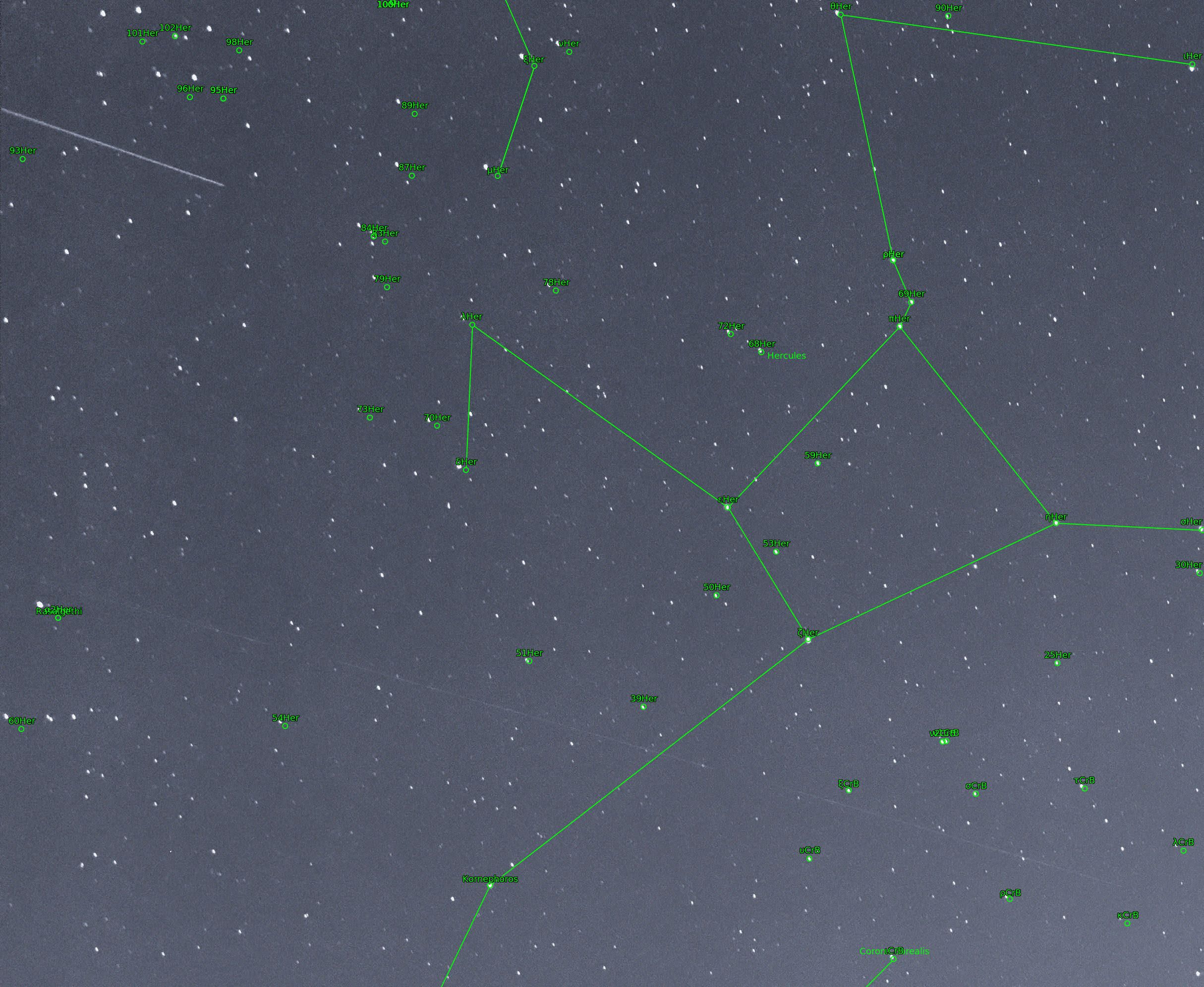
http://archive.is/0Wwge/98607d6fe877d5d4a5363b26bfbf71851b47667f.jpg ; https://archive.is/0Wwge/cd6c36bf767835180f10813e9708c647e468d840/scr.png ; http://web.archive.org/web/20200709234417/https://nova.astrometry.net/annotated_full/4367472 ; http://web.archive.org/web/20200709234531/https://nova.astrometry.net/user_images/3801885#annotated ; http://archive.vn/ORMZT
▲ 3. IGS 8A (IGS-Radar 4) satellite's pass as caught on camera.




TAGS:
BGUSAT, Kwangmyongsong-4, GOSAT-2, Yaogan 25A/25B/25C, FIA-Radar 5, KWANGMYONGSONG R/B, IRS P3, Shijian-16, USA-224, GOSAT, IGS 8A
Very high noise level of the camera sensor caused by the current record heatwave (38C degrees in the arctic lately or 17C degrees above the average June level).
__________________________
IGS 8A (IGS-Radar 4)
Information Gathering Satellite (情報収集衛星, Jōhō Shūshū Eisei) are the satellites of the Japanese spy satellite program. It was started under the clumsy excuse as a response to the 1998 North Korean Kwangmyongsong-1 satellite launch. The satellite program's main mission is to provide early warning of impending space launches in the region. This program is under the direct control of the cabinet. All Information Gathering Satellites have been launched by H-IIA rockets from the Tanegashima Space Center.
On 28 March 2003, presumably partly in response to North Korea's launch of a Paektusan-1 space carrier in 1998, and partly to provide a source of satellite images other than through cooperation with the US, where the US charged roughly US$10,000 for each satellite image, Japan launched a radar and an optical spy satellite, officially known as IGS 1A and IGS 1B.These satellites follow one another at 37-minute separation in a 492 km orbit, which passes over Pyongyang at 11:22 each day, according to observations collected on the satellite watching mailing list.
The program suffered a setback when Japan lost the second pair of satellites because of an H-IIA launch failure on 29 November 2003.
Except the satellite which failed in launching, a second optical surveillance satellite IGS 3A was launched on 11 September 2006.
A third optical satellite IGS 4A and a second radar satellite IGS 4B were launched on 24 February 2007. IGS 4A is a more advanced and experimental optical satellite.
A fourth optical satellite IGS 5A was launched on 28 November 2009. This satellite has a higher resolution than the previous generations.
Late March 2007, the first SAR satellite in the series, IGS 1B, suffered a critical power failure. The satellite has since been observed to steadily come down and was clearly no longer under control. An uncontrolled re-entry of this satellite occurred on 26 July 2012. Since summer 2010, another of the SAR satellites, IGS 4B has also been unable to carry out its monitoring functions.
Following several more satellites, the IGS 8A (IGS-Radar 4) launched on 27 January 2013, is a 3rd generation of SAR, with a ground resolution of under 1 meter.

http://archive.vn/Ycc9W/91d2b2bc3c90c59ad557b8187994d2d7319e9c15.jpg ; https://archive.vn/Ycc9W/33007091386372e258b257afbc45ffb55cebe199/scr.png ; http://web.archive.org/web/20200710...apan/22/d8/j/o0460025913193194195.jpg?caw=800 ; http://web.archive.org/web/20200710002425/https://ameblo.jp/skysatjapan/entry-11978451048.html ; http://archive.vn/hXfqV
▲ 1. Launched on 27 January 2013, the IGS 8A (IGS-Radar 4) is a 3rd generation of SAR, with a ground resolution of under 1 meter.
__________________________
The Information Gathering Satellites are built by Mitsubishi Electric (MELCO), operated by the Cabinet Satellite Information Center - that is to say, presenting these as "non-military" satellites to gather "information" rather than military intelligence satellites.
What an utter reckless sophistry from the same that at the same time dared to claim the North Korean civilian Kwanggmyongsong-1 satellite launch was a maskirovka for a ballistic missile!
This program presents a few puzzles. The first launch, which was successful [and presumably the second launch, which was not], orbited a pair of spacecraft, one radar and one electro-optical. By one account, the former had a mass of a bit under 1,000 kg, and the later a bit more.
Many details, including orbital parameters, were classified for the first time in Japan's post-war history. The satellites, called Optical-1 and Radar-1, carried either optical or synthetic aperture radar sensors. NASDA reported that deployment of each satellite's solar panels went as planned and that the spacecraft's' operations were nominal. Full information and transmissions services of the IGS system were expected to begin in March 2004 following the planned launch in August 2003 of Optical-2 and Radar-2. The design life of the satellites was five years.
IGS 8A
NORAD ID: 39061
Int'l Code: 2013-002A
Perigee: 516.9 km
Apogee: 523.3 km
Inclination: 97.4 °
Period: 94.9 minutes
Semi major axis: 6891 km
RCS: Unknown
Launch date: January 27, 2013
Source: Japan (JPN)
Launch site: TANEGASHIMA SPACE CENTER (TNSTA)
IGS 8A is a Japanese spy satellite. The radar-equipped satellite can take pictures of the ground day-and-night and in all weather conditions.
__________________________
Two Line Element Set (TLE):
IGS 8A
1 39061U 13002A 20158.04260535 0.00000000 00000-0 00000-0 0 09
2 39061 97.4139 277.2621 0004615 139.9619 220.0379 15.17646057 00

http://archive.vn/2auU2/c6802f14bf8722a3e85a43daebe33f80cba8868f.jpg ; https://archive.vn/2auU2/718250272c5d5c1b8679544ff57247478ccbccea/scr.png ; http://web.archive.org/web/20200710011012/https://i.imgur.com/Ot6JyYC.jpg
▲ 2. IGS 8A (IGS-Radar 4) satellite's pass: Magnitude: ~4.5(d), Length: ~4.0 m; Diameter: ~2.0 m; Angular size: ~01.1"; Altitude: 517 km; Distance: 722 km.
As a rule of thumb, the large antenna deployed by SAR satellites make them more easy to spot.
Japanese IGS 8A satellite' pass caught in Hercules on camera, the first night of this month, compared to the higher RCS Indian TES satellite pass, calibrated via astrometry.net:

http://archive.is/0Wwge/98607d6fe877d5d4a5363b26bfbf71851b47667f.jpg ; https://archive.is/0Wwge/cd6c36bf767835180f10813e9708c647e468d840/scr.png ; http://web.archive.org/web/20200709234417/https://nova.astrometry.net/annotated_full/4367472 ; http://web.archive.org/web/20200709234531/https://nova.astrometry.net/user_images/3801885#annotated ; http://archive.vn/ORMZT
▲ 3. IGS 8A (IGS-Radar 4) satellite's pass as caught on camera.




TAGS:
BGUSAT, Kwangmyongsong-4, GOSAT-2, Yaogan 25A/25B/25C, FIA-Radar 5, KWANGMYONGSONG R/B, IRS P3, Shijian-16, USA-224, GOSAT, IGS 8A


